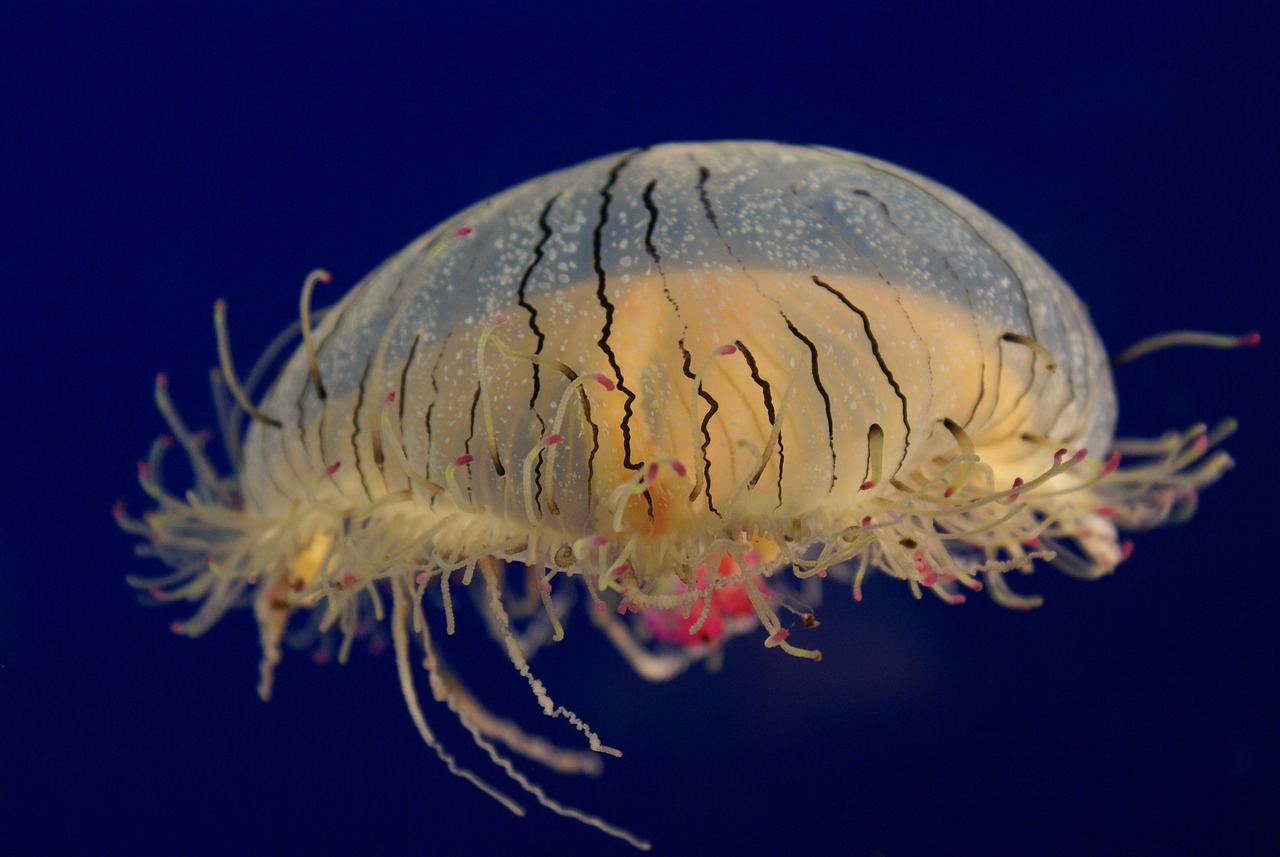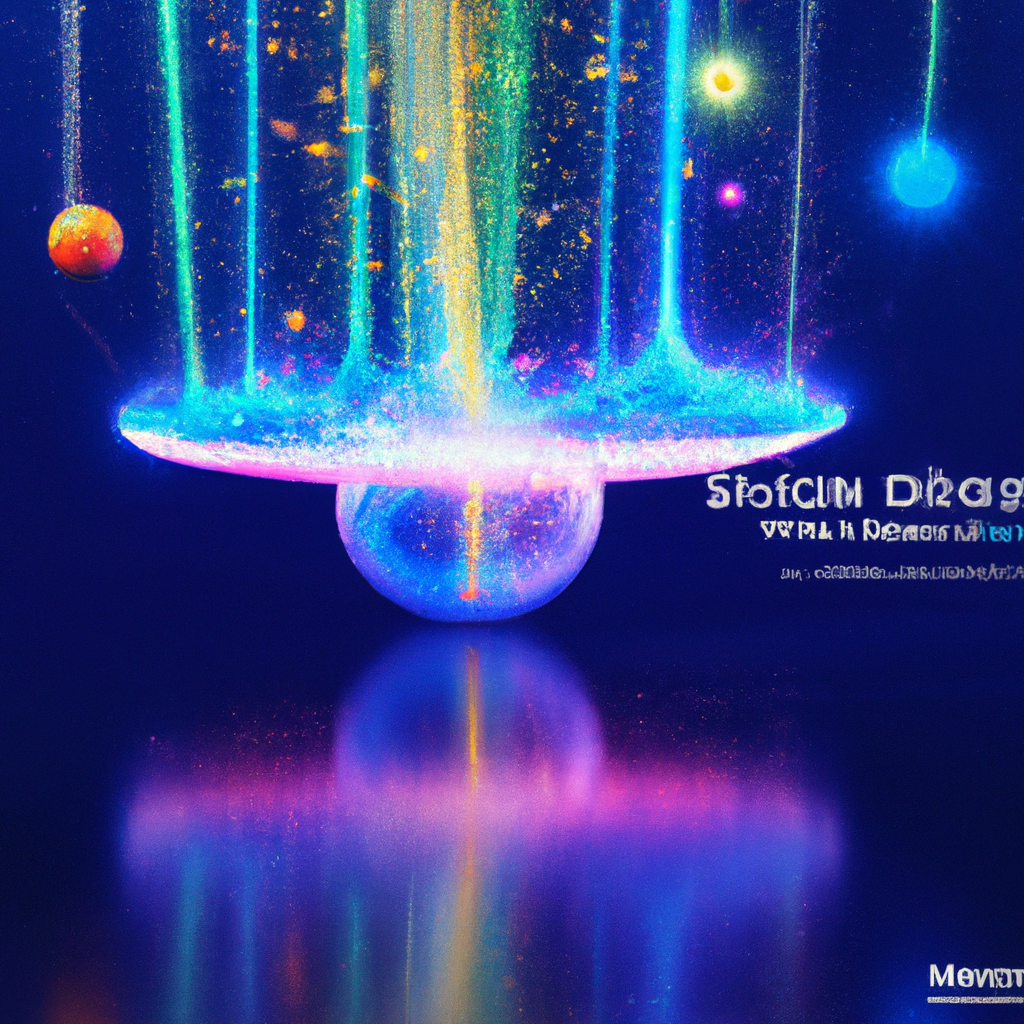Imagine a world where the future of lighting lies not in artificial bulbs, but in the glowing wonders of nature. Bioluminescence, the natural ability of organisms to produce light, is captivating the world of design, offering innovative possibilities for sustainable and captivating lighting solutions. Picture living walls that softly illuminate entire rooms, glowing pathways that guide your way in the dark, and furniture that radiates a soothing gentle glow. Bioluminescence in design is not only about functionality but also about creating an enchanting and immersive experience that brings nature’s brilliance indoors. Join the fascinating journey of bioluminescence and discover how it is illuminating the future of design.

1. Introduction
Welcome to the world of bioluminescence in design! In this article, we will explore the fascinating phenomenon of bioluminescence and delve into its potential applications in various fields, including architecture, interior design, and art. Bioluminescence, the emission of light by living organisms, has long captivated scientists and artists alike. With its mesmerizing glow and intricate mechanisms, bioluminescence offers a wealth of inspiration for innovative and sustainable design solutions. Join us as we embark on this illuminating journey into the realm of bioluminescence in design.
2. Bioluminescence in Nature
2.1 What is bioluminescence?
Bioluminescence refers to the ability of organisms to produce and emit light through a chemical reaction. This unique phenomenon is found in a wide array of organisms including bacteria, fungi, marine creatures, and even insects. The light produced by bioluminescent organisms is a result of a biochemical reaction involving luciferin, a light-emitting pigment, and luciferase, an enzyme that catalyzes the reaction. This captivating natural phenomenon has evolved for various purposes such as attracting mates, luring prey, or as a means of communication and protection.
2.2 Examples of bioluminescent organisms
The natural world is filled with awe-inspiring examples of bioluminescent organisms. Fireflies, also known as lightning bugs, are perhaps the most iconic bioluminescent insects known for their magical night-time displays. Marine organisms like dinoflagellates, responsible for the mesmerizing phenomenon known as “red tide”, emit blue or green light when disturbed, creating a dazzling spectacle in the ocean. Deep-sea creatures such as anglerfish and vampire squids use bioluminescence as a means of luring prey or as a defense mechanism in the dark depths of the ocean. These examples highlight the incredible diversity and adaptability of bioluminescent organisms in different ecosystems.
2.3 Mechanisms of bioluminescence
The mechanisms behind bioluminescence are incredibly intricate and diverse. Different organisms employ various pathways to generate light. In some cases, chemicals or energy is stored and released when triggered by specific events, such as physical movement or changes in temperature. Other organisms, like bacteria, produce light through intracellular reactions within specialized structures called photophores. The color and intensity of the emitted light can vary, depending on the specific biochemistry and genetic makeup of the organism. These complex mechanisms provide a wealth of inspiration for designers seeking to harness bioluminescence in their creations.
3. Bioluminescent Organisms as Design Inspiration
3.1 Incorporating bioluminescent colors and patterns
The vibrant colors and intricate patterns displayed by bioluminescent organisms can serve as a rich source of inspiration for designers. By emulating these natural patterns, designers can create visually striking and dynamic designs. Imagine a ceiling adorned with glowing patterns reminiscent of a school of bioluminescent fish or a wall that shimmers with the ethereal glow of fireflies at dusk. By incorporating bioluminescent colors and patterns, designers can bring nature’s mesmerizing light show into our man-made environments.
3.2 Using bioluminescent materials and textures
Bioluminescence not only offers inspiration for visual design elements but also presents opportunities for incorporating unique materials and textures. Certain organisms possess bioluminescent proteins or compounds that can be extracted and utilized in manufacturing processes. These materials can be engineered to emit light when exposed to specific stimuli, opening up possibilities for luminescent fabrics, paints, and even architectural coatings. Imagine a luminescent fabric that emits a gentle glow at night or a luminescent paint that illuminates the walls of a room with a subtle radiance. By utilizing bioluminescent materials and textures, designers can create truly enchanting and immersive experiences.
3.3 Mimicking bioluminescent communication and signaling
Bioluminescence serves as a means of communication and signaling in the natural world. Organisms use light to attract mates, warn predators, or communicate with their own species. By studying and mimicking these communication methods, designers can integrate bioluminescent elements into their creations to enhance functionality and aesthetics. For instance, imagine a building facade that changes its luminescent patterns to communicate weather conditions or a responsive lighting system that adjusts its intensity based on occupancy. By drawing inspiration from bioluminescent communication and signaling, designers can imbue their creations with not only beauty but also purpose and functionality.
4. Bioluminescent Lighting Applications
4.1 Advantages of bioluminescent lighting
Bioluminescent lighting offers several advantages over traditional electric lighting systems. One of the most significant advantages is energy efficiency. Bioluminescent organisms have evolved to generate light efficiently, often using minimal energy. Harnessing this efficiency in lighting design can lead to significant energy savings and reduced environmental impact. Additionally, bioluminescent lighting can provide a more subtle and calming illumination compared to the harshness of artificial lighting, creating a soothing and healthier environment for occupants.
4.2 Bioluminescent lighting in architecture and interior design
Incorporating bioluminescent lighting into architecture and interior design can create truly transformative spaces. Imagine a bioluminescent ceiling that simulates a starry night sky, providing a serene backdrop for relaxation or contemplation. Bioluminescent light sources can be strategically placed to highlight architectural features or create captivating focal points in a room. Whether it’s a luminescent stairway guiding your way or a glowing wall that evokes tranquility, bioluminescent lighting has the potential to redefine the aesthetics and functionality of our built environments.
4.3 Bioluminescence in street and outdoor lighting
Bioluminescent lighting can also be applied to outdoor and street lighting, revolutionizing the way we illuminate our cities and landscapes. Traditional street lighting often relies on electricity, which can be costly and environmentally taxing. Bioluminescent lighting, on the other hand, offers the potential for sustainable and visually appealing lighting solutions. Imagine streets illuminated by glowing trees or pathways that softly illuminate the surrounding environment. By harnessing the power of bioluminescence, outdoor lighting can become more energy-efficient, visually stunning, and in harmony with nature.

5. Bioengineering Techniques for Bioluminescence
5.1 Genetic modification of organisms
One of the most promising avenues for harnessing the potential of bioluminescence in design is through genetic modification of organisms. Scientists have made significant strides in genetically engineering organisms to produce light more efficiently or in new colors. By manipulating the genes responsible for bioluminescence, researchers can create organisms that emit light on command or in response to specific stimuli. This technology opens up endless possibilities for bioluminescent designs, unlocking a realm of creativity and innovation previously unimaginable.
5.2 Biochemical engineering for enhanced bioluminescence
Biochemical engineering techniques can also be employed to enhance the intensity and duration of bioluminescent light emission. Researchers can optimize the biochemical pathways involved in light production, leading to brighter and longer-lasting bioluminescent effects. By fine-tuning the bioluminescent reaction, designers can create materials and organisms capable of generating vibrant and sustained light, further expanding the potential applications of bioluminescence in design.
5.3 Synthetic bioluminescent materials
In addition to harnessing natural bioluminescence, scientists and designers are exploring the realm of synthetic bioluminescent materials. By creating entirely new materials capable of emitting light, researchers can design lighting solutions that are not limited by the genetic makeup of existing organisms. Synthetic bioluminescent materials offer the potential for custom-made light sources, with precise control over color, brightness, and duration of light emission. This opens up exciting new possibilities for designers to create unique and innovative bioluminescent designs.
6. Sustainability and Future Implications
6.1 Sustainable aspects of bioluminescent lighting
Bioluminescent lighting holds great promise for sustainability. As mentioned earlier, bioluminescent organisms are incredibly energy-efficient, requiring minimal energy inputs to produce light. By harnessing this natural efficiency in lighting design, we can significantly reduce energy consumption and lower our carbon footprint. Furthermore, bioluminescent lighting systems can utilize renewable resources, such as algae or bacteria, ensuring a sustainable and environmentally friendly approach to illumination.
6.2 Potential for reducing energy consumption
With energy consumption being a growing concern, bioluminescent lighting offers a viable solution for reducing our reliance on traditional electric lighting. By incorporating bioluminescent technologies in buildings, street lighting, and outdoor spaces, we can decrease energy consumption, lower greenhouse gas emissions, and mitigate the environmental impact associated with lighting systems. Bioluminescent lighting provides an exciting opportunity to pave the way for a more sustainable and greener future.
6.3 Bioluminescent lighting as a renewable resource
Bioluminescent lighting has the potential to become a renewable resource in itself. By harnessing the natural abilities of bioluminescent organisms and developing sustainable cultivation methods, we can create a continuous supply of bioluminescent materials. For example, algae or bacteria farms could be established to grow and harvest these organisms for their bioluminescent properties. This renewable resource approach ensures a consistent supply of bioluminescent materials for design applications while perpetuating the delicate balance of ecosystems.

7. Challenges and Considerations
7.1 Ethical concerns in genetic modification
As with any emerging technology, bioluminescent design presents ethical considerations, particularly in the context of genetic modification. The manipulation of genes in organisms raises questions about the potential impact on ecological systems and the moral responsibilities associated with altering the natural world. Striking a balance between creativity and responsible innovation will be crucial as bioluminescent design continues to evolve.
7.2 Safety considerations of bioluminescent materials
When incorporating bioluminescent materials into design applications, safety considerations are paramount. Just like any other materials used in architecture and interior design, bioluminescent materials must undergo rigorous testing and meet safety standards to ensure they pose no harm to occupants or the environment. It is important for designers to work closely with scientists, engineers, and regulatory bodies to ensure the responsible use of bioluminescent materials.
7.3 Feasibility and scalability of bioluminescent designs
While the potential of bioluminescent design is exciting, feasibility and scalability need to be carefully considered. Scaling up bioluminescent lighting applications from small-scale installations to large architectural projects or city-wide lighting systems presents technical challenges that require further research and development. Addressing issues such as light intensity, durability, and maintenance will be crucial to the widespread adoption of bioluminescent design solutions.
8. Bioluminescence and Human Well-being
8.1 Psychological and physiological effects of bioluminescent lighting
Bioluminescence has the potential to positively impact human well-being through its psychological and physiological effects. Research suggests that exposure to natural light has numerous benefits, including improved mood, increased productivity, and better sleep. Bioluminescent lighting, with its soft and soothing glow, can provide a more natural and calming alternative to artificial lighting, promoting a healthier living and working environment.
8.2 Bioluminescence as a form of therapy and relaxation
Bioluminescence can also be harnessed for therapeutic purposes, promoting relaxation and stress reduction. The gentle and mesmerizing glow of bioluminescent lighting can create a tranquil atmosphere, bringing a sense of peace and tranquility. Designers can use bioluminescent elements in spaces such as spas, meditation rooms, or wellness centers to enhance the therapeutic experience and create a soothing environment for relaxation and rejuvenation.

9. Bioluminescent Art and Design Installations
9.1 Bioluminescent art as an expression of creativity
Bioluminescent art represents a unique and captivating form of creative expression. By incorporating living organisms or synthetic bioluminescent materials, artists can create immersive installations that engage the senses and evoke wonder in viewers. Bioluminescent art offers a dynamic and ever-changing visual experience, continually transforming and interacting with its surroundings. From sculptures that emit ethereal light to interactive installations that respond to human presence, bioluminescent art pushes the boundaries of artistic expression and blurs the line between nature and design.
9.2 Examples of bioluminescent installations in design
Bioluminescent installations have already made their mark in the world of design. For instance, the Glowing Nature exhibit by artist Marin Sawa showcased immersive installations featuring bioluminescent mushrooms, creating a surreal and magical experience. Another example is the Bioluminescent Forest installation by creative studio Marshmallow Laser Feast, which transformed a forest into a mesmerizing light show using bioluminescent technology. These examples demonstrate the power and potential of bioluminescent installations in creating unique and awe-inspiring experiences.
9.3 How bioluminescent art can create immersive experiences
Bioluminescent art has the ability to transport viewers into a world of enchantment and wonder. By combining light, nature, and innovative design, these installations immerse viewers in a captivating sensory experience. Walking through a bioluminescent art installation can evoke a sense of awe and inspire a deeper connection with the natural world. Such immersive experiences have the potential to spark creativity, foster contemplation, and leave a lasting impression on viewers.
10. Conclusion
Bioluminescence in design presents a world of endless possibilities. From the ethereal glow of bioluminescent organisms to the innovative use of synthetic materials, the integration of bioluminescence has the potential to redefine the way we illuminate, communicate, and experience our built environments. As we strive for sustainable and regenerative design practices, bioluminescent lighting offers a promising solution that combines art, science, and nature. With careful consideration of ethical concerns, safety, and feasibility, bioluminescent design can truly light up the future, transforming our world into a luminous tapestry of beauty, efficiency, and harmony with nature. So go forth, and let the glow of bioluminescence guide you towards a brighter and more illuminating future.













